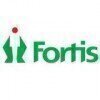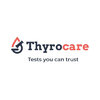Filter interviews by
Apollo Hospitals Interview Questions and Answers for Freshers
Apollo Hospitals Interview Experiences for Freshers
39 interviews found
I applied via Walk-in and was interviewed in Jun 2024. There were 2 interview rounds.
A paper test consisting of 20 questions covering various subjects related to pharmacy.
(5 Questions)
- Q1. Can you tell me about yourself?
- Q2. What are your educational qualifications?
- Q3. What is the classification of antibiotics, and can you provide examples for each category?
- Q4. What are anti-epileptic drugs, and can you provide examples?
- Q5. What is the definition of bioavailability?
Interview Preparation Tips
- Pharmacology
- Pharmaceutics
I appeared for an interview in May 2025, where I was asked the following questions.
- Q1. Regarding vaccine
- Q2. Basic drugs and HAP
- Q3. 20 marks mcq test of basic drugs and pharmaceutics related questions
(1 Question)
- Q1. Tell me a time when you failed
(1 Question)
- Q1. Walk me through three financial statements
- Ans.
The three financial statements are the income statement, balance sheet, and cash flow statement.
Income statement shows a company's revenues and expenses over a specific period of time.
Balance sheet provides a snapshot of a company's financial position at a specific point in time.
Cash flow statement shows how changes in balance sheet and income affect cash and cash equivalents.
I applied via Company Website and was interviewed in Sep 2024. There was 1 interview round.
(2 Questions)
- Q1. Basic ML with project experience
- Q2. Statistics and Python coding
I applied via Naukri.com and was interviewed in Jun 2024. There were 3 interview rounds.
Few questions about drug and disease
(3 Questions)
- Q1. Asked how you developed the mentioned skills
- Q2. About the project
- Q3. Drug classification
(1 Question)
- Q1. Discussed about salary,work location,etc
Interview Preparation Tips
- Pharmacology
I applied via LinkedIn and was interviewed in Apr 2024. There were 2 interview rounds.
There many questions
(3 Questions)
- Q1. There are many rounds
- Q2. Asking for a details
- Q3. Related apollo hospital
Interview Preparation Tips
Complete by HR during interview
(4 Questions)
- Q1. Complete by HR during interview
- Q2. Antihypertensive drugs name
- Q3. Antidiabetes drugs name
- Q4. Emergency injection uses
(1 Question)
- Q1. 3rd round completely by HR
Face to face Group Discussions
Skills evaluated in this interview
I applied via Company Website and was interviewed in Oct 2023. There were 2 interview rounds.

(5 Questions)
- Q1. What are the site of pulse?
- Ans. Carotid pluse,temporal pulse, apical pulse, femoral pulse,brachial pulse, radial pulse.
- Q2. How will calculate the expected date of delivery?
- Ans. Nine month +seven days
- Q3. What are the the types of postnatal exercise?
- Q4. How will be prevent the anemia?
- Q5. What are the site of intradermal
Interview Preparation Tips
To active the duty
To follow the ethics
(2 Questions)
- Q1. Define hospital pharmacist?
- Q2. Tell me any 5 drugs used as anti TB
Skills evaluated in this interview
(2 Questions)
- Q1. Self introduction
- Q2. About Human Resources
Interview Preparation Tips
Top trending discussions






Apollo Hospitals Interview FAQs
Some of the top questions asked at the Apollo Hospitals interview for freshers -
The duration of Apollo Hospitals interview process can vary, but typically it takes about less than 2 weeks to complete.
Tell us how to improve this page.
Apollo Hospitals Interviews By Designations
- Apollo Hospitals Staff Nurse Interview Questions
- Apollo Hospitals Pharmacist Interview Questions
- Apollo Hospitals Hospital Pharmacist Interview Questions
- Apollo Hospitals Nursing Staff Interview Questions
- Apollo Hospitals Medical Officer Interview Questions
- Apollo Hospitals Medical Laboratory Technician Interview Questions
- Apollo Hospitals Lab Technician Interview Questions
- Apollo Hospitals Registered Nurse Interview Questions
- Show more
Interview Questions for Popular Designations
- Staff Nurse Interview Questions
- Pharmacist Interview Questions
- Hospital Pharmacist Interview Questions
- Nursing Staff Interview Questions
- Medical Officer Interview Questions
- Medical Laboratory Technician Interview Questions
- Clinical Pharmacist Interview Questions
- Lab Technician Interview Questions
- Show more
Overall Interview Experience Rating
based on 20 interview experiences
Difficulty level
Duration
Interview Questions from Similar Companies
Apollo Hospitals Reviews and Ratings
based on 5k reviews
Rating in categories
Pune,
Wagholi
0-2 Yrs
₹ 3.6-16.8 LPA
|
Staff Nurse
1k
salaries
| ₹1.8 L/yr - ₹5.5 L/yr |
|
Pharmacist
688
salaries
| ₹1.5 L/yr - ₹4.2 L/yr |
|
Assistant Manager
242
salaries
| ₹4.8 L/yr - ₹11.5 L/yr |
|
Clinical Pharmacist
232
salaries
| ₹1.4 L/yr - ₹4 L/yr |
|
Nursing Staff
224
salaries
| ₹1.5 L/yr - ₹5 L/yr |

UnitedHealth

Fortis Healthcare

Dr Lal PathLabs

Narayana Health
- Home >
- Interviews >
- Apollo Hospitals Interview Questions >
- Apollo Hospitals Interview Questions for Fresher













